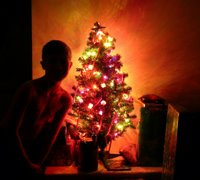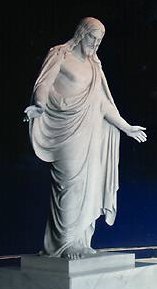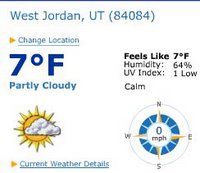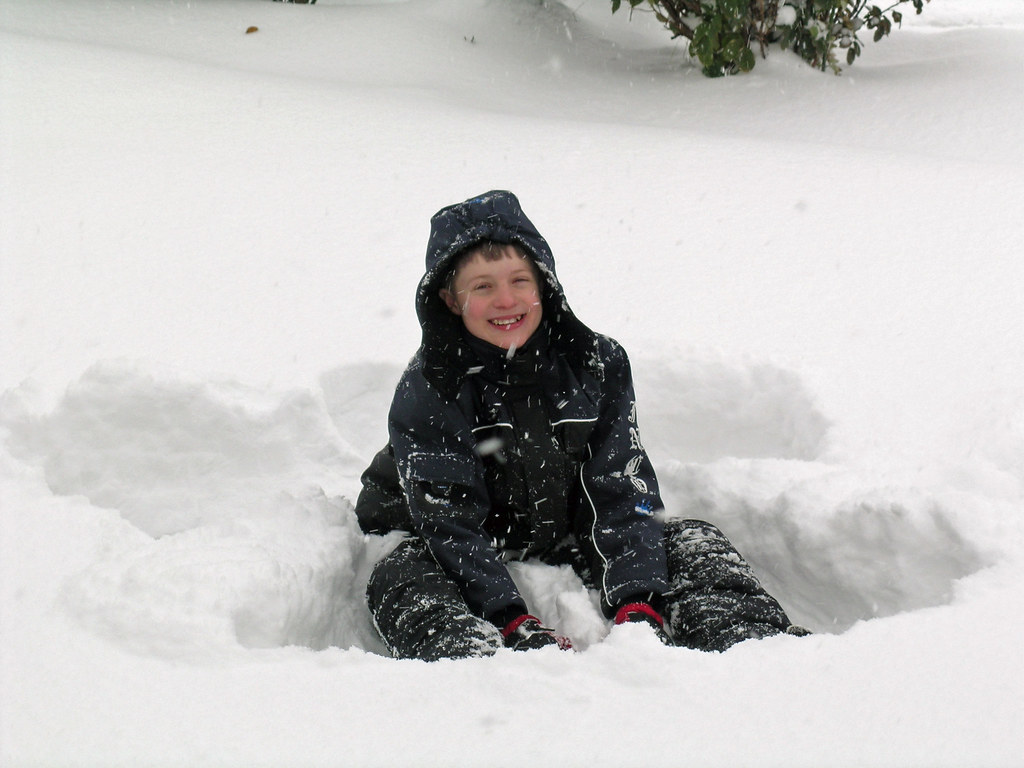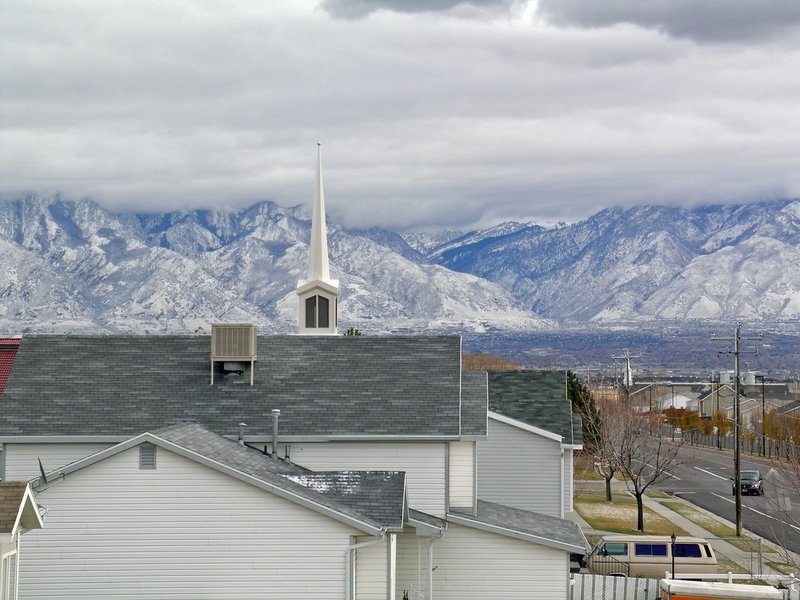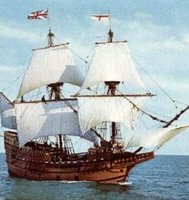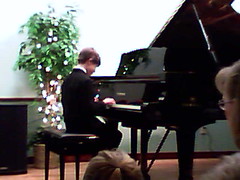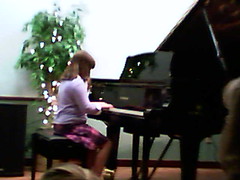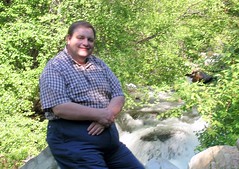Next week will be the 42
nd anniversary of the Kennedy Assassination.
In June of 2003, I spent a week at a convention in the Dallas, Texas area. I flew in on a Saturday, to get the best air fare possible. That left my Sunday free, since the convention didn't start until Monday morning. I decided to visit Dealy Plaza, the location of the Assassination of President John F. Kennedy. This was a moving experience forme. Here are my thoughts after my visit, which I wrote in my hotel room later that night:

Texas Schoolbook Depository
-- Sunday, June 15, 2003.
Today I visited the Texas Schoolbook Depository at Dealy Plaza, in Dallas, Texas. This year, on November 22, it will be 40 years since John F. Kennedy (JFK) was assassinated there.
My Own RecollectionsIt was a moving experience to be there. I am old enough that I remember that day, back in 1963. I was a Kindergarten Student, at Jefferson Elementary School in Salt Lake City. The assassination took place on a Friday, at 12:30 PM in Dallas. By 1:00 that day it was announced to the world that JFK was dead.
I remember an announcement over the Loudspeaker at school. The announcement would have been made at Noon, in Utah because of the time zone differences. I remember how stunned and silent we were, when the announcement came over that Loudspeaker. School was let out early that day.
I don't remember how many days it was until school went back into session, but I think we were out until after JFK's funeral.
I remember being camped out in front of our little black and white TV set (with rabbit ears), watching the events as they transpired. I especially remember seeing the casket in the Capitol Rotunda.
I remember the funeral procession as it moved down the road to Arlington National Cemetery. I remember horses in the procession.
Perhaps on of the most poignant images for me was that of the president's son, JFK Jr, in his little short pants outfit, Saluting as the flag-draped casket of his father passed by. John Jr. would have be just about 3 years old on that day.
I remember Jackie Kennedy's strength and resolve through these most horrible circumstances. Her actions always seemed to be filled with such poise and grace.
Dealy PlazaUpon my arrival in the area, I first walked up to the JFK Memorial. It is a large square structure, intended to have a tomb-like appearance. It has four walls, but no ceiling. The walls are comprised of several cement pillars, but they are constructed in such a way as only eight of the pillars actually touch the ground. The other pillars appear as they are floating, unsupported in the air.
Inside the tomb, is a large, nearly square, black, monolith. It too has the appearance of not quite touching the ground. On the sides of the monolith is the gold lettered name of "John Fitzgerald Kennedy".
I next walked over toward the Texas Schoolbook Depository. The sixth floor of the building is where Lee Harvey Oswald fired those fatal shots. I walked around Dealy Plaza, and took photos of the Plaza, and the Building.
Conspiracy Theories AboundOutside the building were hucksters. They were conspiracy theory mongers. They were spouting diatribes against the findings of the Warren Commission, and the other 4 governmental investigations into the assassination.
They were trying to sell books, video and audio tapes and CD's, and magazines -- each purporting to tell the "real" story. As you would walk around the Plaza, while trying to contemplate the magnitude of the crime that took place there, and the impact that the assassination had upon our nation, and upon the world, the hucksters would assail your thoughts and contemplations. Just when you wanted to have a quiet moment to think and reflect, they would shove grisly autopsy photos in your face, and try to sell you their wares, and profit by attempting to convince you of the validity of the some conspiracy theory. After one such incident, I learned to avoid the conspiracy profiteers by waiting until they were occupied with other listeners (either willing or unwilling) and slipping past them before I could be flashed with another autopsy photo of the President's head.
 The Sixth Floor Museum
The Sixth Floor MuseumI had my dark glasses on, and had parked several blocks away. I wanted to go into the museum, but needed to have my clear glasses first. So I walked back to the car that I had parked on a side street (free parking meters on Sundays!) and drove the car back over to the Texas Schoolbook Depository.
Having retrieved my clear glasses, and freshened up a bit. I entered the museum at about 4:30 PM. (The museum closes at 6:00. Later I found that I should have allotted more time. I could easily have taken 3 hours there, instead of the hour-and-a-half that I spent there.)
The first 5 floors are still being used as government offices. The Sixth and Seventh floors are part of the museum (also an annex has been built at ground level, with its own elevator up to the 6th floor, which bypasses the offices that are still located in that building.)
The museum starts off first by setting the stage of the times in which this event took place. Such things as what the popular books, movies, TV Shows, and music were at the time. Many of these things brought back memories for me.
Next were the highlights of JFK's life, before taking office as President. There were pictures of him as a youth, in his Navy Uniform, and of his Wedding Day.
The Presidential Campaign of 1960 was also covered. It showed both JFK, and Jackie hard at work on the campaign trail. There were excerpts of his speech from the Democratic National Convention of 1960.
There were many photos and excerpts from his inauguration and the famous quote -- "Ask not what your country can do for you, but ask what you can do for your country."
The 1000 days of the Kennedy Presidency were reviewed with its failures as well as its successes. The legacies of the Kennedy Administration: The space program, the Peach Corps, the Cuban Missile Crisis, the Bay of Pigs, The Civil Rights Act, and our military involvement in Southeast Asia (Vietnam).
I remember as I carefully weighed the programs and policies of this administration, I think as a whole, I would not have supported it. In, fact on that fateful day in Dallas, there were many here in this city who were not enamored of the president's policies. In the museum, there were copies of full-page ads taken out in the Dallas Morning News from those who opposed many of the president's programs.
Then the museum showed the moment-by moment events of that day, Nov. 22nd, 1963. The president had been to Ft. Worth earlier that day, and had flown over to Dallas before joining the motorcade. He rode in a black convertible limousine, with the top down. At several points along the parade route, the president had the vehicle stop, where he would get out to greet and shake hands with people. There were approximately 230,000 people lining the parade route that day. The president was en- route to a bi-partisan luncheon that day.
There were 2200 highly-coveted invitations sent out to the luncheon. The tables were set, and the crowd awaited, but the luncheon never took place. Just a few minutes longer, and the president would have been dining with his guests. The place setting for the president was left untouched. (That place setting, with the china and silverware are now a part of the museum exhibits.) JFK was near the end of the parade route when three shots rang out from the Texas Schoolbook Depository and rained down upon Dealy Plaza. The shots found their mark. The president was dead, and the Governor of Texas, John Connaly was also wounded.
The nation, and the world were brought to their knees. The young president, so vivacious and full of life was now dead. His wife, now a young widow, and their two young children were deprived of their husband and father. A nation was deprived of its president, and the world was deprived of the Leader of the Free World.
As I stood next to the window from which those shots rang out, I could see the sniper position that Oswald had staked out for himself. He had arranged some boxes of books to screen himself off from the view of others. He had also placed some boxes in front of him to use as a lean for his rifle. From his position, the president's motorcade would have been traveling away from him in a straight line. I could see now, how he could have accomplished his deadly feat. I also felt more inclined to believe that the conclusions of the Warren Commission were essentially correct. The findings of the commission may have been off on a few minor details, but they did the best they could with the information they had at the time. I came away from this experience believing that Lee Harvey Oswald was indeed the killer, and that the fatal shots came from his location. As far as we can tell, Oswald acted alone. We have no definitive evidence to the contrary.
I do not accept the premises of the conspiracy theorists. I will let this matter trouble me no longer. For me, this matter is resolved and put to rest.
The "What If's"What does remain unresolved, and can never be resolved (at least in this life) are the "What If's". What if this assassination had never taken place -- What then would the world have been like? The assassination of John F. Kennedy is one of those small hinges, upon which the course of history pivots from the due course of "What would have been" to what, instead, history actually became.
Would JFK have been re-elected in 1964? -- Almost certainly.
What would have happened in Vietnam? President Johnson was the one who really escalated US involvement in Vietnam. Perhaps President Kennedy would have brought about a different outcome, who knows?
Would the civil rights movement have turned out differently? Its hard to say. Johnson was able to get the Civil Rights Act of 1964 passed largely as a memory to the Legacy of President Kennedy (and with the help of the opposition political party). Had Kennedy remained president, who knows when or if the Civil Rights Act would have been passed.
Would others have been assassinated as well, had not JFK been assassinated? -- The assassination of JFK plunged the nation and the world into a new round of violence and confrontation. There were those who saw how effective assassination was as a tool to achieve their political and social purposes. The example of the Kennedy Assassination could have greatly contributed to that mindset of violence. One can not help but wonder if Marin Luther King, and Robert F. Kennedy would have still met their same fates, had not JFK first preceded them in martyrdom.
Also with the assassination of JFK, it seems like the national innocence was lost. Many young people became lost souls when their young and energetic Idol/Leader, JFK was killed. I believe that much of the unrest of the 60's, the rebelliousness of the hippie and drug cultures, the anti-war, anti-American sentiments, even the so-called sexual revolution all have their roots in that fateful day in November of 1963.
When considering the "what-if's" it would be easy blame all of the cultural and society degradations we have seen on this assassination. Some of them probably would have happened in their own due time anyway. However, I see the assassination of JFK as a catalyst, that accelerated all of these trends into an explosive mix, that turned out to be the decade -- and the legacy -- of the 60's.
A Personal Interaction.As I toured through the Sixth Floor museum, I was left mostly alone with my thoughts.
However, at one point, as I was viewing one of the displays, a Hispanic young man came up next to me. I could tell that he too, was moved by the experience of being in that place. His remarks to me were about Cuba, and how JFK had tried to take out Fidel Castro -- and that because if this "they" had JFK killed.
He leaned over and read one of the articles that were in opposition to Kennedy's policies, including the polices relating to Cuba. One of these statements indicated their disdain for the president leaving 7,000,000 Cubans trapped as prisoners on that island. Many thousands of Cubans had been killed and imprisoned, with may more being rounded up daily.
The young Hispanic man exclaimed, "7,000,000 people! Wow!", and he walked off, shaking his head as he mourned for the dead and lost Cubans. I am sure also, that as he walked way, he was totally convinced that Fidel Castro was behind the assassination of JFK.
**********************
It was a moving experience for me to visit the memorial, Dealy Plaza, and the Texas Schoolbook Depository. I began to realize that others would come away from this experience with differing impressions than mine. It is interesting how the tide of history turned on this single event.

